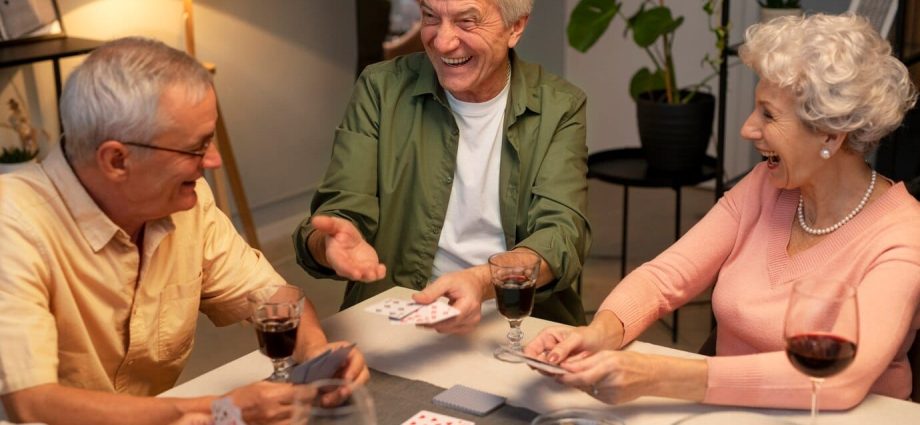When you hear the word “bingo,” what comes to mind? A bustling church hall? The rattle of plastic daubers? The triumphant shout of a winner? Sure, it’s a classic social pastime. But here’s the deal: it’s so much more than just a game. For seniors, a regular bingo night might just be one of the most enjoyable and powerful tools for keeping the mind sharp as a tack.
We’re all looking for ways to stay mentally fit as we age. And honestly, who wants to do boring brain exercises? Bingo, it turns out, is a secret weapon. It’s like a full-scale workout for your brain, disguised as a party. Let’s dive into why this beloved game is making a comeback in memory care and senior living communities.
More Than Luck: The Cognitive Workout of Bingo
Playing bingo isn’t a passive activity. Your brain is firing on all cylinders from the first number called. Think of the bingo caller’s voice as the conductor, and your brain is the orchestra, trying to keep up with the tempo.
Here’s a quick breakdown of the mental muscles you’re flexing:
- Auditory Processing: You have to listen carefully to the numbers and letters being called out. In a noisy room, this is a real test of focus.
- Visual Scanning: Your eyes are constantly darting across your card or cards, searching for the matching pattern. It’s a speed-based visual recognition task.
- Short-term Memory: You have to remember which numbers have been called, especially if you’re managing multiple cards. It’s a real-time memory challenge.
- Fine Motor Skills: The simple act of dabbing the number requires hand-eye coordination. It seems small, but that connection is vital.
And that’s just the baseline. When you add in the speed of the game and the social pressure to keep up, you’ve got a genuinely demanding cognitive environment. It’s a brain game that doesn’t feel like one.
The Evidence on the Table: What Research Says
This isn’t just a nice idea. Science backs it up. Studies from universities in the UK and the US have looked directly at bingo players. They found that regular players often show better performance in tests measuring memory, mental speed, and the ability to switch between tasks compared to non-players.
One of the key findings? Bingo players are often excellent at tasks that require visual search skills. You know, the kind of skill you use when you’re looking for your keys in a cluttered room. Bingo is essentially a high-stakes, fast-paced key-finding mission, over and over again. This constant practice helps maintain and even improve these neural pathways, which can naturally decline with age.
The Social Spice: Why Playing with Others Multiplies the Benefits
You could play bingo alone on a computer. But you’d be missing the most potent ingredient: other people. Cognitive health isn’t just about solving puzzles in isolation. It’s deeply intertwined with our emotional and social well-being.
Loneliness and social isolation are, frankly, terrible for the brain. They’re linked to a higher risk of cognitive decline and dementia. A weekly bingo game is a powerful antidote. It’s a scheduled event that gets seniors out of the house, interacting, laughing, and engaging in friendly competition.
This social engagement releases feel-good chemicals like dopamine and endorphins. It reduces stress. And a less stressed brain is a brain that’s better at learning and remembering. So that chat with your tablemate between games? That’s part of the therapy.
Adapting the Game for Different Cognitive Abilities
Not every senior is at the same cognitive level, and that’s okay. The beauty of bingo is its flexibility. It can be easily modified to provide the right level of challenge for everyone.
| For Beginners or Those with Greater Need | For the Bingo Veterans |
| Use fewer cards (just one to start). | Use multiple cards (4, 6, or even 8!). |
| Slow down the calling pace. | Increase the calling speed for a challenge. |
| Use larger-print cards. | Introduce more complex patterns (like a butterfly or a letter X). |
| Offer “buddy” play for assistance. | Incorporate themed bingo (using pictures or words). |
These adaptations ensure that the game remains accessible, fun, and beneficial, rather than frustrating. The goal is always engagement, not exhaustion.
Making Bingo a Part of a Brain-Healthy Lifestyle
So, how do you get started? Well, it’s easier than you think. Many community centers, senior living facilities, and even local pubs host regular bingo games. The barrier to entry is incredibly low—it’s an affordable, low-risk activity.
But think bigger than just a weekly game. Bingo can be a gateway. The confidence gained from mastering a game can encourage seniors to try other brain-healthy activities. Maybe it’s a book club, a walking group, or learning a new craft. That initial spark of “I can still do this” is incredibly powerful.
Combine bingo with other pillars of brain health—a good diet, physical activity, quality sleep—and you have a robust strategy for aging well. It’s not a magic pill, but it’s a profoundly effective and enjoyable piece of the puzzle.
A Final Thought
In our search for high-tech solutions to cognitive health, we sometimes overlook the simple, timeless tools right in front of us. Bingo has been bringing people together for generations. It’s a game of chance, sure, but the cognitive and social benefits it provides are anything but accidental.
It’s a reminder that sometimes, the best way to care for our minds is not through a solitary app or a clinical exercise, but through shared laughter, focused attention, and the simple, satisfying thud of a dauber hitting a winning number.


